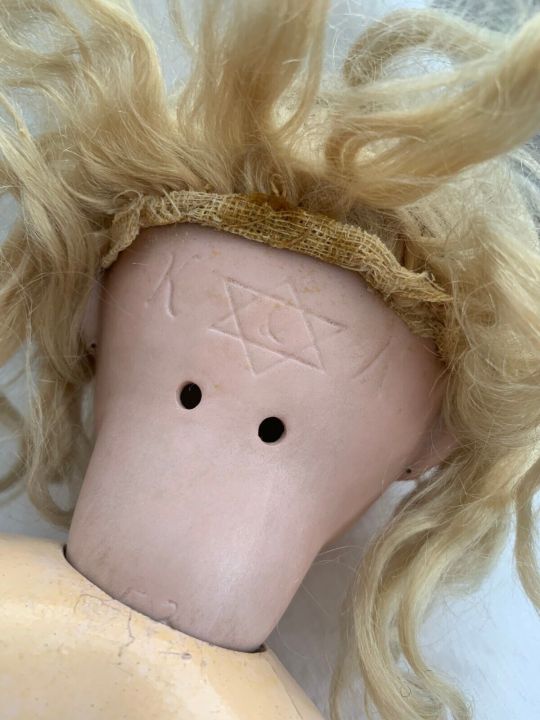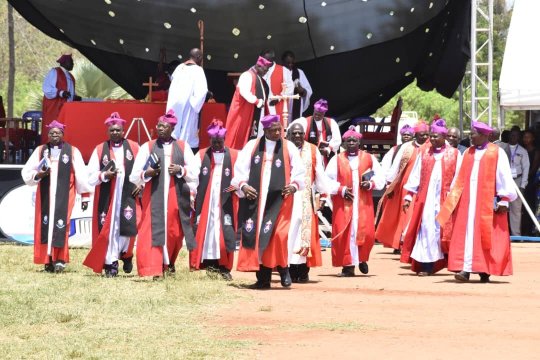#Dollo
Explore tagged Tumblr posts
Note
Another thing is that old-timey dinosaurs didn't move like real animals. They moved like monsters. When I look at those weird lumpy rexes, I can't imagine how they'd move, beyond "guy in a T. rex costume", like a weird awkward waddle. Looking at the more accurate ones, it's easy to understand how they move and what they'd look like in motion.
I've never heard of Dollo; who was he and what was his bad theory?
Yeah that's fair, it's annoying to see the man moving
that said, the raptors in the original JP were also men in a suit - but they compensated to make it look closer to natural
Dollo was a scientist in the 1800s who created a theory that organisms can't re-evolve structures they lost. he didn't know genetics, so he didn't know that features can be turned on and off and thus it can be possible to re-evolve lost structures.
but, because of that theory, he and others decided birds couldn't be dinosaurs. this was because, at the time, we had no evidence of a dinosaur furcula (wishbone) - or, at least, we thought we had no evidence of one. We did, however, have "thecodonts" (early archosaurs) with wishbones - meaning that, if birds evolved from dinosaurs, they would have had to re-evolve the wishbone
turns out a) non-avialan dinosaurs did have wishbones, they just don't fossilize well b) we did have some, we just misidentified them and c) yeah you can redevelop things actually
so we went from birds being dinosaurs being the best supported hypothesis to almost no one believing it within a few years at the end of the 1800s
leading to the "dinosaur dark ages" (dinosaurs are slow evolutionary failures) that was the first 60 years of the 20th century
so, yeah. we can blame dollo, 100%, for everyone being ignorant about dinosaurs.
114 notes
·
View notes
Text

Je vote 22
2 notes
·
View notes
Photo



21 INCH EARLY KAMMER & REINHARDT 53 Doll ebay over*to*you
2 notes
·
View notes
Text
Dolo 650: A Trusted Pain Reliever and Fever Reducer
1 note
·
View note
Text
WilliefromtheDrive - 'Forgot to drop these while protecting your feelings' [Album Reviews]
Posted on https://www.thewordisbond.com/williefromthedrive-forgot-to-drop-these-while-protecting-your-feelings-album-reviews/
WilliefromtheDrive - 'Forgot to drop these while protecting your feelings' [Album Reviews]

Rising rapper WilliefromtheDrive drops his new compilation titled Forgot to drop these while protecting your feelings. The project is a body of work loaded with 62 tracks that spans 2018 to date. The project is a mixed bag of topics that range from loyalty, love, aspirational tunes and
0 notes
Text
Breaking News: Chief Justice Alfonse Owiny-Dollo Orders Transfer of Civilian Cases from Military Courts
In a landmark decision, Chief Justice Alfonse Owiny-Dollo has directed that all ongoing and pending criminal cases involving civilians in the General Court Martial (GCM) and other military courts must immediately cease and be transferred to civilian courts. The directive marks a significant shift in Uganda’s judicial approach, reinforcing the constitutional principle that military courts should…
0 notes
Text
Chief Justice Owiny-Dollo defends judiciary amid Bobi Wine's accusations.
Chief Justice Alphonse Owiny-Dollo L , opposition leader Bobi Wine R . Courtesy image. In a strong defense of the judiciary, Chief Justice Alphonse Owiny-Dollo has responded to allegations made by opposition leader Bobi Wine regarding the impartiality of the judicial system in Uganda. Speaking to judicial officers of the Supreme Court and Court of Appeal during a retreat in Mbarara City on…
0 notes
Text
Chief Justice urges the Christian community and Acholi to forgive Idi Amin clan
Uganda’s Chief Justice, Alfonse Owiny-Dollo, has re-echoed the need for reconciliation and forgiveness of the late Idi Amin’s clan by the Acholi community over the death of Archbishop St Janani Luwum nearly 50 years ago. Courtesy of Alfonse Owiny-Dollo Luwum was the Archbishop of the Church of Uganda from 1974 until his assassination in 1977.It has been widely reported that Luwum was killed on…

View On WordPress
0 notes
Text
50 mini music lyric book sticker
#music note#music sticker#retro fashion#melody sticker#i love music#doll house#dollo house music#music room#music lover#melody doll
0 notes
Text
What's most amazing about people who hate that birds are dinosaurs is that, without the discovery of birds being dinosaurs in the 1960s, none of y'all would have ever actually cared about dinosaurs
the history:
dino craze in 1800s. people thought, birds are very similar to these guys. Dollo fucked it up, made a bad theory, and people stopped thinking that
Early 1900s, dinosaurs deemed sluggish, stupid, pointless evolutionary failures. most people not really into dinosaurs anymore. this continues until
1960s: Deinonychus discovered. suddenly, dinosaurs interesting again: vibrant, lively, warm blooded animals. Also... birds might be dinosaurs?
from the 60s through the 70s, a slow buildup of dinosaur culture - both in crappy stop motion movies, but also in children's books and other media
80s cladistics revolution shows birds are living dinosaurs, though not without flaws. documentary after documentary is made, causing the major dinosaur boom of the late 80s and early 90s
the peak of this boom are the A&E and PBS documentaries, which both outright state birds are dinosaurs
cartoons like land before time and other dinosaur content keep coming out too, especially at the end of the 80s and the earliest 90s
the book jurassic park, referencing the birds are dinosaurs thing, is written in the late 80s. in the early 90s, is adapted into one of the greatest blockbusters of all time. now dinosaur interest is MAINSTREAM.
jurassic park isn't the start of the dinosaur boom, it is the apex
90s becomes the decade of dinosaurs, with tons of new discoveries, television shows, documentaries, and other programming
1996 first feathered "nonavian" dinosaur discovered. birds are dinosaurs is the closest thing we have to proven phylogenetic fact
1999 walking with dinosaurs premieres, revolutionizing the dinosaur-documentary genre.
early 2000s becomes the age of Period-Type Dino-Docu-Dramas
velociraptor is determined to have feathers
suddenly, dinosaur mania starts to die in the later 2000s
even though discoveries keep happening and we learn so much in the 2010s, the 2010s becomes a very regressive time - a sort of reactionary response to the birdification of dinosaurs and the dinosaurification of birds. the height of this is jurassic world
we may be in the middle of a dino-docu-drama revitilization thanks to prehistoric planet. stay tuned on that one
like, everyone was fine with the birdification of dinosaurs up and until they looked "feminine" on the outside, because of feathers.
It's just all such transparent misogyny and homophobia and people who react against feathered dinosaurs or birds being dinosaurs are just... so transparently parroting conservative talking points
Anyways, yeah. without birds are dinosaurs, you wouldn't have jurassic park. Sooooo
#I don't know why I keep talking about this#I'm procrastinating my museum collection conservation assignment tbh#birds are dinosaurs#feathered dinosaurs#jurassic park
2K notes
·
View notes
Text
Selected recurrent patterns or "laws" of evolution, of potential use for speculative biology. List compiled by Neocene's Pavel Volkov, who in turn credits its content to Nikolay Rejmers (original presumably in Russian). These are guidelines, and not necessarily scientifically rigorous.
Dollo's Law, or irreversibility of evolution: organisms do not evolve back into their own ancestors. When mammals returned to the sea, they did not develop gills and dermal scales and change back into fish: they became whales or seals or manatees, who retain mammalian traits and show marks of land-dwelling ancestry.
Roulliet's law, or increase of complexity: both organisms and ecosystems tend to become more complex over time, with subparts that are increasingly differentiated and integrated. This one is dodgier: there are many examples of simplification over time when it is selected for, for example in parasites. At least, over very large time scales, the maximum achievable complexity seems to increase.
Law of unlimited change: there is no point at which a species or system is complete and has finished evolving. Stasis only occurs when there is strong selective pressure in favor of it, and organism can always adapt to chaging conditions if they are not beyond the limits of survival.
Law of pre-adaptation or exaptation: new structures do not appear ex novo. When a new organ or behavior is developed, it is a modification or a re-purposing of something that already existed. Bone tissue probably evolved as reserves of energy before it was suitable to build an internal skeleton from, and feathers most likely evolved for thermal isolation and display before they were refined enough for flight.
Law of increasing variety: diversity at all levels tends to increase over time. While some forms originate from hybridization, most importantly the Eukaryotic cells, generally one ancestor species tends to leave many descendants, if it has any at all.
Law of Severtsov or of Eldredge-Gould or of punctuated equilibrium: while evolution is always slow from the human standpoint, there are moments of relatively rapid change and diversification when some especily fertile innovation appears (e.g. eyes and shells in the Cambrian), or new environments become inhabitable (e.g. continental surface in the Devonian), or disaster clears out space (e.g. at the end of the Permian or Cretaceous), followed by relative stability once all low-hanging fruit has been picked.
Law of environmental conformity: changes in the structure and functions of organisms follow the features or their environment, but the specifics of those changes depend on the structural and developmental constraints of the organisms. Squids and dolphins both have spindle-shaped bodies because physics make it necessary to move quickly through water, but water is broken by the anterior end of the skull in dolphins and by the posterior end of the mantle in squids. Superficial similarity is due to shared environment, deep structural similarity to shared ancestry.
Cope's and Marsh's laws: the most highly specialized members of a group (which often includes the physically largest) tend to go extinct first when conditions change. It is the generalist, least specialized members that usually survive and give rise to the next generations of specialists.
Deperet's law of increasing specialization: once a lineage has started to specialize for a particular niche, lifestyle, or resource, it will keep specializing in the same direction, as any deviation would be outcompeted by the rest. In contrast, their generalist ancestors can survive with a marginal presence in multiple niches.
Osborn's law, or adaptive radiation: as the previous takes place, different lines of descent from a common ancestor become increasingly different in form and specializations.
Shmalhausen's law, or increasing integration: over time, complex systems also tend to become increasingly integrated, with components (e.g. organs of an organism, or species in a symbiotic relationship) being increasingly indispensable to the whole, and increasingly tightly controlled.
230 notes
·
View notes
Text







charlie acton-dollo sweetest cutest lamest guy all time 🫶 assorted squinks from last night, all meant to take place in that happy post-canon timeline (plus one vampire au and a couple werecat aus LOL)
(other guy snuggling up to him in that one pic is my friends oc and actons new partner prussian blue!)
#scraps#dr. acton#the last one is so stupid im crazy about it. his big ass head and little ass hands and peets
7 notes
·
View notes
Text
i should be drawing more Murphy Acton-Dollo. heres a doodle from last weekish I MISS HIM FUUUUUUUUUUUUCKKK MY SWEETSIE STARTS POUNDING ON THE GROUND

#aroouuuuuuuuuuuuuuuuuuu. i miss him. but the missing him never translates into enough energy to DRAW HIM#draw him seriously at least i manage a couple teenys like this time to time#mumbling
3 notes
·
View notes
Note
3 and 12 and 15!!!!!
3. What were your top five books of the year?
already answered so i will share my favorite audiobooks i listened to! The angel of indian lake, Remote control, Sal and gabi break the universe, The making of biblical womanhood: how the subjugation of women became gospel truth, and Call the midwife :-)
12. Any books that disappointed you?
circe by madeline miller i had to read for class and compared to my memories of song of achilles in 2019 which got me back into reading for fun it was NOT as good and it was not my favorite. ugh! the lesbian body by monique wittig seemed so cool in concept but it was really more a long-form poem than a novel and i did not click with it at all LOL. and history of science fiction by xavier dollo had interesting information but it was not the most well-structured in the graphic novel :/
15. Did you read any books that were nominated for or won awards this year (Booker, Women’s Prize, National Book Award, Pulitzer, Hugo, etc.)? What did you think of them?
i didn't LOL. the more i learn about the awards system through collection development processes i see the benefit of them for some people but its not really important in how i choose what to read or how i think about titles of interest hehe
1 note
·
View note
Note
are you rich do you have 1,0000,000 dollor....
beh
OF COURSE!!!!!! me have billion dolloe !!
2 notes
·
View notes
